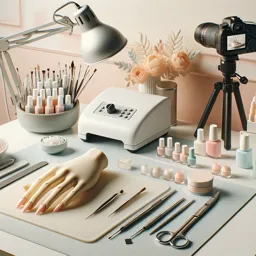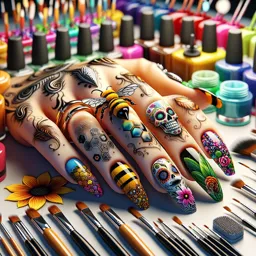Understanding Acrylic Nails: What Makes Them Unique?
Acrylic nails are among the most popular enhancements in the world of manicures and pedicures. But what exactly makes acrylic nails so durable and customizable? In this article, we’ll dive into the chemistry behind acrylics, discuss why they work so well, and share expert tips to maximize their longevity and appearance.
The Chemistry of Acrylic Nails
Acrylic nails are created by mixing a liquid monomer with a powder polymer. When these two substances combine, they undergo a chemical reaction called polymerization. This reaction forms a hard, protective layer over your natural nails. This layer can be shaped, filed, and designed according to preference, making acrylic nails highly versatile for any nail art enthusiast or professional.
- Liquid Monomer: Typically composed of ethyl methacrylate, it acts as the catalyst for the hardening process.
- Powder Polymer: Made from polymethyl methacrylate (PMMA), it provides the structure and strength for the nail extension.
Why Acrylic Nails Stand Out in Durability
One of the key reasons acrylic nails remain popular is their exceptional durability. When properly applied, acrylic nails can last for several weeks, resisting chips, cracks, and breakage better than most natural nails. The strength of the polymerized acrylic allows for longer or more intricate designs—perfect for those who want to make a statement with their nails.
Application Tips for Lasting Acrylics
While the chemistry is fascinating, success with acrylic nails also hinges on expert technique. Here are some professional tips for achieving a flawless, long-lasting result:
- Prep the Natural Nail: Gently file the nail surface and remove all oils using a nail dehydrator before application for better adhesion.
- Use High-Quality Materials: Always opt for reputable monomer and polymer brands to minimize risks of yellowing or lifting.
- Work in Thin Layers: Building acrylics in manageable, thin layers ensures better curing and reduces thickness for a more natural look.
- Proper Curing Time: Allow enough time for the acrylic to fully harden before filing and shaping for optimal durability.
- Finish with a Protective Top Coat: Sealing with a gel or acrylic top coat enhances shine and protection.
Customizing Acrylic Nail Looks
Acrylic nails are a blank canvas for creativity. Not only can you choose from a range of lengths and shapes, but you can also experiment with colors, patterns, and nail art. Whether you desire a classic French tip, vibrant ombré, or intricate designs, acrylics provide a sturdy base for just about any style.
Conclusion
Acrylic nails combine art and science for limitless beauty possibilities. Understanding the chemistry and perfecting your application technique can help you achieve stunning, long-lasting nails every time.






















